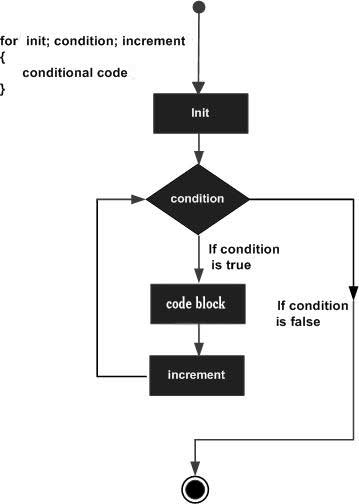This loop has been deprecated in Swift 3.
Swift Swift Parameter resolution: Next, it will judge After the execution The conditions are judged again. If true, the loop is executed, and the process is repeated over and over again (loop body, then increase the step value, and then re-determine the condition). The for loop terminates when the condition becomes false. Flow chart: The output of the above program execution is as follows:
for
a loop is used to repeat a series of statements until a specific condition is reached, usually by increasing the value of the counter after each loop is completed. 9.18.1. Grammar #
for
the syntax format of the loop is as follows:for init; condition; increment{
loop body
}
init
will be executed first, and only once. This step allows you to declare and initialize any loop control variables. You can also not write any statements here, as long as a semicolon appears.
condition
. If true, the loop body is executed. If false, the loop body is not executed, and the control flow jumps to the following
for
the next statement of the loop.
for
after looping the body, the control flow jumps back to the
increment
statement. This statement allows you to update loop control variables. This statement can be left blank as long as a semicolon appears after the condition.
9.18.2. Example #
import Cocoa
var someInts:[Int] = [10, 20, 30]
for var index = 0; index < 3; ++index {
print( "The value corresponding to the index [\(index)] is \(someInts[index])")
}
The value corresponding to index [0] is 10
The value corresponding to index [1] is 20
The value corresponding to index [2] is 30